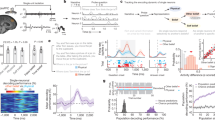Abstract
ONE way to study the processes of human reasoning is to observe the behaviour of different people as they wrestle with a variety of “reasoning problems”. If these problems are comparable in some way, so that they can be related in terms of common features, and differentiated on the basis of idiosyncratic ones, it may prove possible to decide what features of a problem are of importance in influencing reasoning behaviour, and what “mechanisms of reasoning” these features call on.
This is a preview of subscription content, access via your institution
Access options
Subscribe to this journal
Receive 51 print issues and online access
$199.00 per year
only $3.90 per issue
Buy this article
- Purchase on SpringerLink
- Instant access to full article PDF
Prices may be subject to local taxes which are calculated during checkout
Similar content being viewed by others
References
Hunter, I. M. L., Brit. J. Psychol., 48, 286 (1957).
De Soto, C., London, M., and Handel, S., J. Personality and Social Psychol., 2, 513 (1965).
Huttenlocher, J., Psychol. Rev., 75, 550 (1968).
Author information
Authors and Affiliations
Rights and permissions
About this article
Cite this article
WOOD, D. Approach to the Study of Human Reasoning. Nature 223, 101–102 (1969). https://doi.org/10.1038/223101a0
Received:
Revised:
Issue date:
DOI: https://doi.org/10.1038/223101a0



